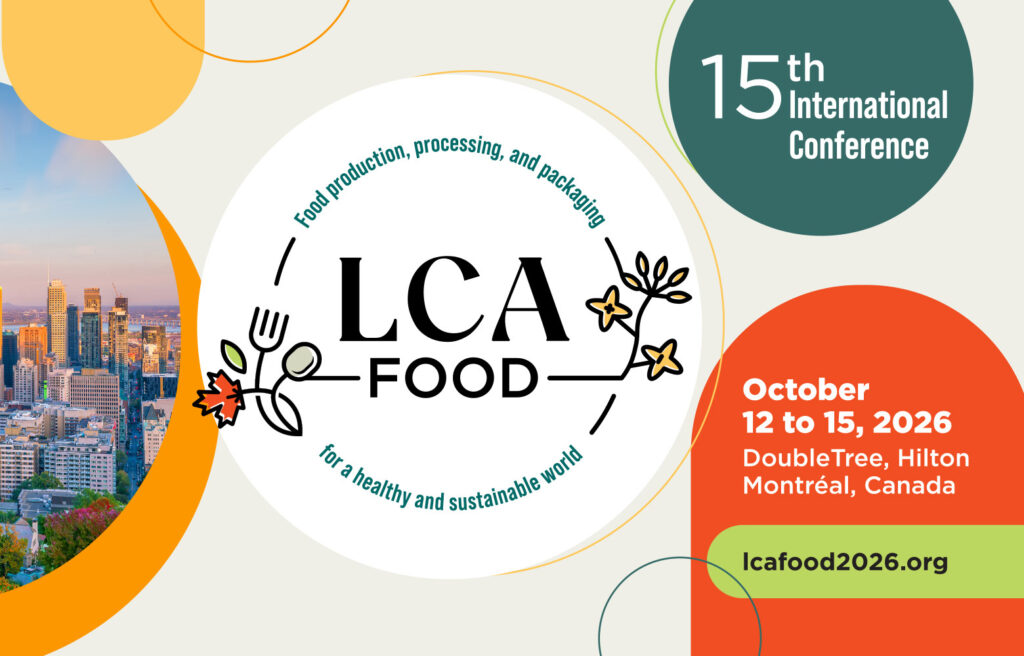Every year, Canada imports over 100,000 tonnes of lemons. That’s about fifteen lemons per person per year. These lemons come mainly from the United States, South Africa, Mexico, Argentina, and Spain. While fifteen lemons a year doesn’t sound like a lot per person, the fact that it’s an exotic fruit, almost always imported, suggests a pretty significant environmental impact.
So, what’s the environmental impact of a lemon?
According to figures from the Quebec Consumption Life Cycle Inventory database, developed by CIRAIG, in Quebec, 1 kg of lemons purchased generates around 1.2 kg of CO2 equivalent. In comparison, 1 kg of apples generates just under 1 kg of CO2 equivalent. Overall, a quarter of this impact comes from lemon production and another quarter from transporting the lemons to the grocery store. A third quarter comes from processing the lemon waste generated at home (peels and lemons that spoil before you can eat them), and the remainder is divided between packaging and the journey to and from the grocery store.
These figures are averages, and can vary greatly depending on the context. In particular, the impact of transport can increase significantly if it is not optimized, since lemons need to be refrigerated to be transported. And since a refrigerated truck consumes much more energy than a boat or train, if the lemons were delivered directly from Mexico by truck, the impact would be up to 1.5 times higher. In fact, transport makes a significant contribution to the total impact of lemons, because the impact of lemon production is rather limited, as is the case for most fruits and vegetables.
For more details on the production stage, researchers studied lemon production in Argentina and found that almost 90% of the impact comes from the production and application of chemicals (such as fertilizers and pesticides). These products also have an impact on ecosystems that is not considered when talking solely about carbon footprints. The rest of the impact comes from the fuel used by the machinery in the fields. Irrigation, for its part, has a major impact on water resources, but contributes very little to the impact on climate change.
What about lemon juice?
For example, a small 440 ml bottle of lemon juice concentrate contains the equivalent of the juice of 10 lemons. Producing this bottle costs around 20g CO2 equivalent per lemon, or less than 2% of a lemon’s carbon footprint, other things being equal. The step of squeezing the lemon to extract the juice will also have a small additional impact, as it requires electricity.
Moreover, a bottle of lemon juice can be kept much longer than fresh lemons. This reduces the waste of lemons, so fewer lemons are produced for the same purpose. At home, almost 20% of lemons purchased are thrown away unused, as they are no longer fit for consumption. Reducing waste therefore represents a significant reduction in impact. A longer shelf-life also means less waste during transport or at the grocery store. What’s more, we can assume that industrial presses are more efficient than we are at home: not only is there less lemon loss, but less juice loss per lemon squeezed.
Finally, lemon juice represents only about a quarter of the fruit’s weight. So, transporting only the bottled juice rather than the whole lemon is much more efficient, greatly reducing the impact of transport. Finally, bottled lemon juice avoids end-of-life management at home of the fruit’s skin and flesh.
But this skin and flesh will also have to be processed by manufacturers, won’t they?
Yes, but for them, it’s mainly an additional raw material. Rather than burying them or, at best, composting them, the industry that recovers these products will seek to optimize them. In particular, they can extract essential oils and limonene, which can be used in perfumery, the chemical industry or the pharmaceutical industry. Once all these elements have been extracted from lemon peels, they can also be recycled for energy purposes, replacing another source of energy in the plant, such as diesel or natural gas.
In this way, lemons meet more needs than simply supplying lemon juice. The impact of its production is divided between these different products, which proportionally reduces the impact of the lemon juice itself.
What about concentrated juice?
The nutritional properties of bottled lemon juice (for example, its vitamin C content) are very similar to those of fresh lemons, if the bottle is kept in a cool place, in the same way as the lemon. On the other hand, concentrated juice requires more processing than non-concentrated juice. In particular, it must be dehydrated (i.e., a large part of its water content must be removed), so that it can be transported and stored more efficiently. Water is then added again when the juice is bottled, making it ready for direct consumption by the consumer. These transformations can alter the nutritional properties of lemon juice. We must therefore be careful.
From an environmental point of view, on the one hand, this dehydration and rehydration operation requires energy, notably in the form of heat, and will therefore have an additional impact. Nevertheless, it will greatly reduce the impact of transport, as neither the peel, nor the flesh, nor the water of the lemon need to be transported. Determining whether concentrated juice is better or worse than non-concentrated juice in terms of environmental impact is complex, as it depends very much on the type of energy used on the one hand, and the mode and distance of transport on the other.
Industrial juices, particularly those based on concentrates, are often also accompanied by additives and preservatives. In addition to their potential effects on health, these will improve the product’s shelf life, once again reducing product waste and thus greatly reducing its impact. However, the impact of the production of these additives must be added to the environmental footprint of the lemon juice.
So, is bottled lemon juice better overall than fresh lemons?
Quite yes, if the lemons are only used to consume their juice. On the other hand, of course, if you also want to use the zest or peel, or even the whole lemon for cooking or cleaning, for example, this comparison no longer holds.
Moreover, if you’re interested in juice not just for taste but also for nutritional reasons, then you need to make sure, at least by reading the information on the bottle, that the squeezed juice, especially if it’s made from concentrate, still contains a similar amount of vitamin C and antioxidants.
Also, we saw that one of the main contributors to lemons’ impact was transport. Perhaps in a few years, lemon production will develop in Canada on an industrial scale. This is already happening on a somewhat anecdotal basis in the West, notably on Vancouver Island, where temperatures are milder. This could greatly reduce the impact of transport, making local lemons better for the environment than imported ones. That’s if the energy consumption required to grow them here doesn’t completely offset this gain!
This blog post is taken from a column presented on October 18, 2023, by CIRAIG research associate Elliot Muller on Radio-Canada’s program – Moteur de recherche.
Bibliography
Beccali, M., Cellura, M., Iudicello, M., & Mistretta, M. (2010). Life cycle assessment of Italian citrus-based products. Sensitivity analysis and improvement scenarios. Journal Of Environmental Management, 91(7), 1415‑1428. https://doi.org/10.1016/j.jenvman.2010.02.028
Braich, B. (2022, 28 décembre). These British Columbians are growing lemons, oranges and other subtropical fruit in the province. CBC. https://www.cbc.ca/news/canada/british-columbia/british-columbians-subtropical-fruit-1.6689079
Cabot, M. I., Lado, J., & Sanjuán, N. (2023). Multi-season environmental life cycle assessment of lemons : A case study in south Uruguay. Journal Of Environmental Management, 326, 116719. https://doi.org/10.1016/j.jenvman.2022.116719
CIRAIG. (2023, 7 septembre). Base de données d’inventaire du cycle de vie de la consommation au Québec – CIRAIG. https://ciraig.org/index.php/fr/project/base-de-donnees-dinventaire-du-cycle-de-vie-de-la-consommation-au-quebec/
Ferrero, L., Wheeler, J., & Mele, F. D. (2022). Life cycle assessment of the Argentine lemon and its derivatives in a circular economy context. Sustainable Production And Consumption, 29, 672‑684. https://doi.org/10.1016/j.spc.2021.11.014
O’Citrus | Place aux agrumes québécois ! (2019, 28 mars). La Presse. https://www.lapresse.ca/affaires/portfolio/laval/201903/28/01-5219940-place-aux-agrumes-quebecois-.php
Privé, M. (2023, 4 janvier). Des détails ? 3 éléments très importants pour bien choisir son jus de citron. https://www.passeportsante.net/. https://www.passeportsante.net/magazine/nutrition?doc=details-elements-tres-importants-bien-choisir-jus-citron
Produits – ReaLemon et ReaLime. (s. d.). ReaLemon And ReaLime. https://www.realemon.ca/fr/products
Radio-Canada. (s. d.). | L’épicerie | zone Télévision | Radio-Canada.ca. https://ici.radio-canada.ca/actualite/v2/lepicerie/niveau2_6535.shtml









